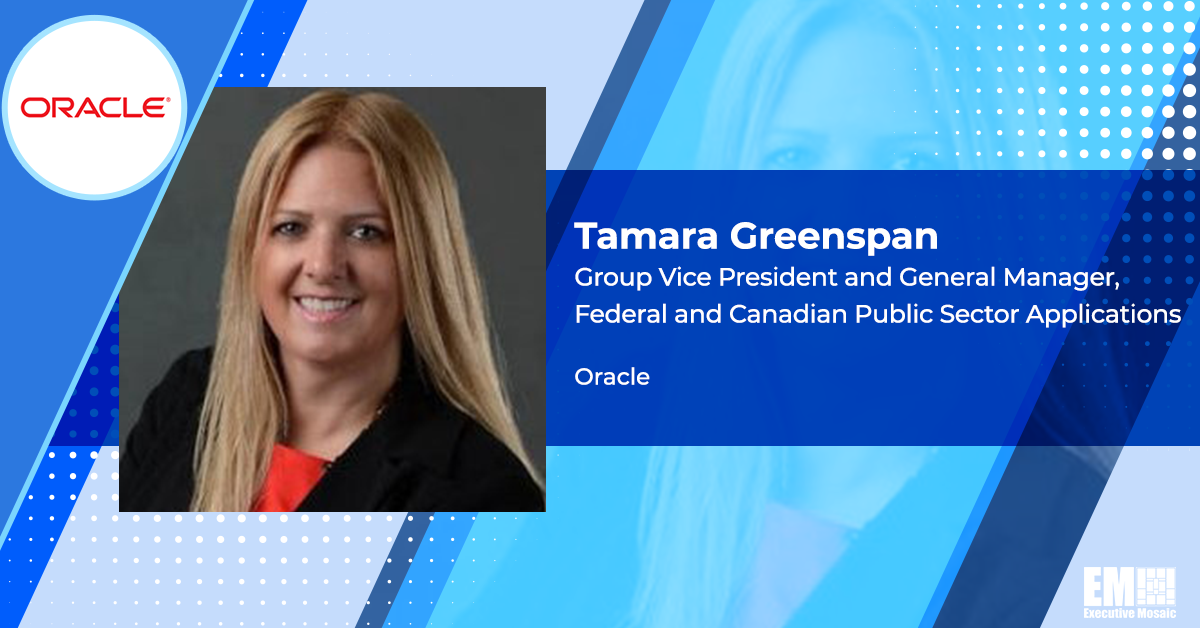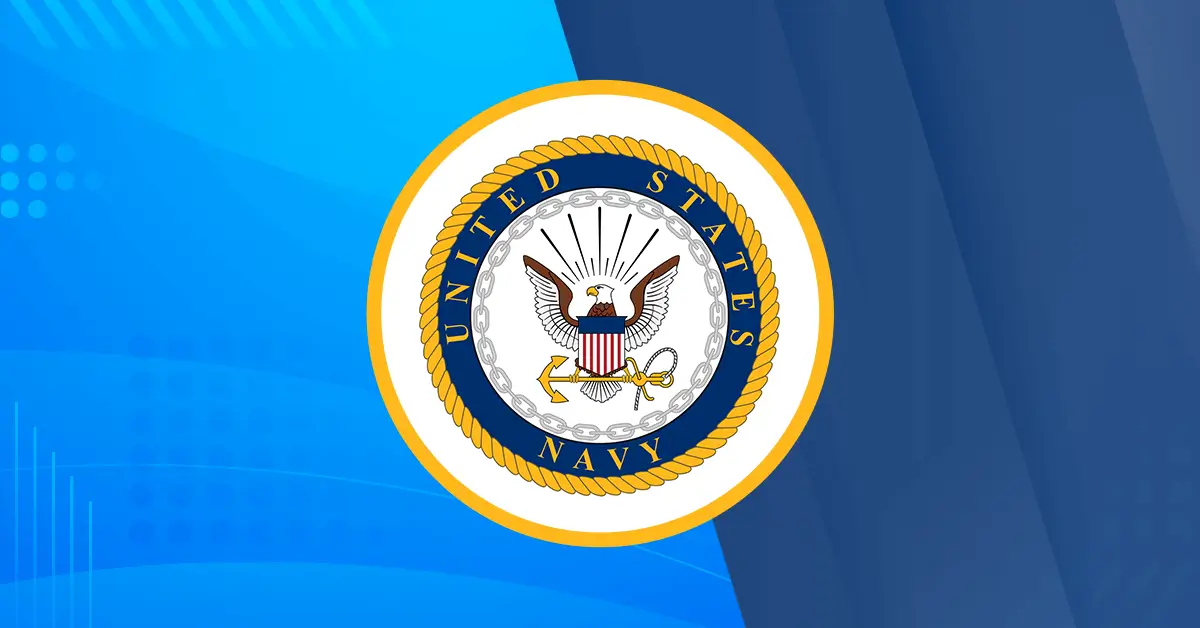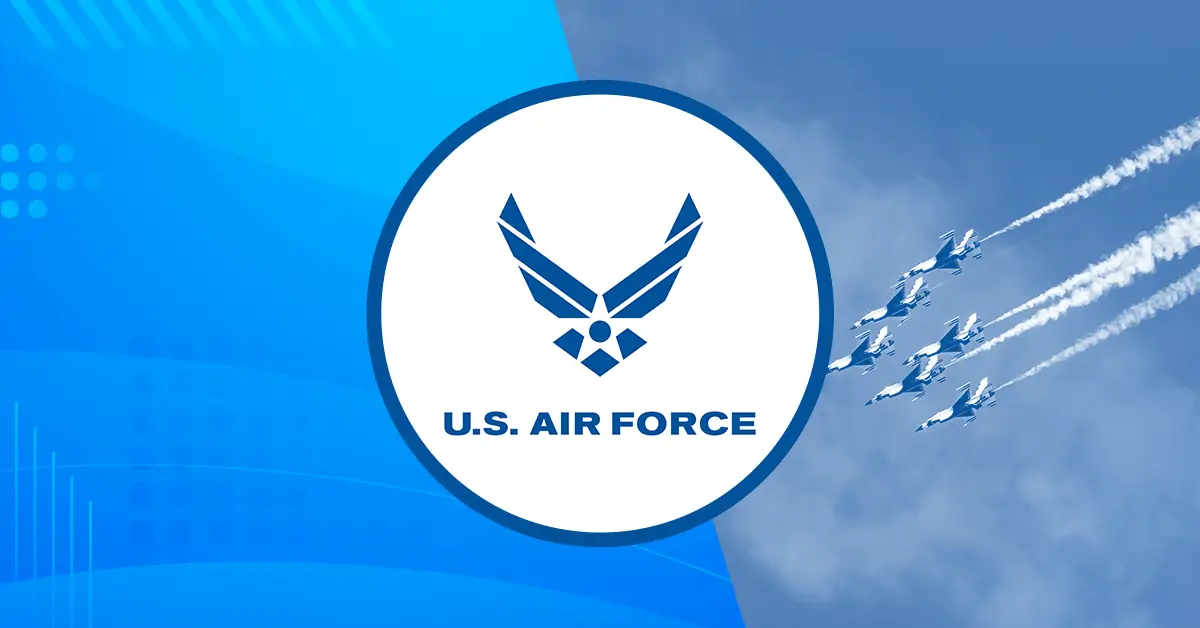Software, cloud and emerging technologies like artificial intelligence are rapidly expanding in the public sector. As federal agencies migrate to the cloud, they’re looking to industry for all-encompassing products, services and systems that can help smooth the transition and accelerate their modernization journeys.
Tamara Greenspan, group vice president and general manager of application sales for Oracle’s federal business, recently sat down with GovCon Wire to talk about how Oracle is helping government agencies meet their most challenging modernization needs as reliance on advanced technology increases.
Read below to find Tamara Greenspan’s full Executive Spotlight interview.
GovCon Wire: Tell me about Oracle’s growth strategy. Where do you see new opportunities for expansion? Are there any new markets or capabilities you’re looking to tap into?
Tamara Greenspan: “Oracle Cloud Software-as-a-Service and Oracle Cloud Infrastructure (SaaS and OCI, respectively, and collectively, Oracle Cloud Services) offerings are opportunities for us to expand our cloud and license business. We are in the early stages of what we expect will be a material migration of our existing Oracle customer base from on-premise applications and infrastructure products and services to the Oracle Cloud.
We can market our SaaS and cloud infrastructure services to a broader ecosystem of small and medium-sized businesses, non-IT lines of business purchasers, developers and partners due to the highly available, intuitive design, low-touch, and low-cost characteristics of the Oracle Cloud.”
GCW: Can you talk expand on your plan to penetrate the federal cloud market?
Greenspan: “In the federal market, Oracle is focused on IaaS, and SaaS has had solid success in the market. Many of the larger agencies are still crafting their SaaS strategies, and we are supporting them by continuing to support our eBusiness Suite and PeopleSoft customers. For example, G-Invoicing has been a huge level of effort for Oracle and federal agencies, but Oracle is delivering a full solution for those customers. Meanwhile, we are excited about Cloud Federal Financials and HCM solutions so that when agencies are ready, they can move to SaaS and gain the efficiencies and cost savings of having their full financials and human resources on a single integrated data model. Oracle Fusion Cloud Applications, including ERP and HCM, are FedRAMP Moderate and IL4 accredited.”
GCW: How do Oracle’s recent contracts and acquisitions support the company’s growth strategy? What benefits are being derived from these activities?
Greenspan: “Our selective and active acquisition program is an important element of our corporate strategy. We believe that our acquisitions enhance the products and services that we can offer to customers, expand our customer base, provide greater scale to accelerate innovation, grow our revenues and earnings and increase stockholder value. We have invested billions of dollars over time to acquire several companies, products, services and technologies that add to, are complementary to, or have otherwise enhanced our existing offerings.”
GCW: How does Oracle set itself apart from its competitors in today’s highly competitive market?
Greenspan: “We’re committed to our customers’ success—bringing faster value with our customer-first mindset, a complete suite of applications and leading-edge technology.
We have a large installed base of customers within the federal government, and we are committed to working with each one of them as they make their journey to the cloud. Behind this customer success is our best practice methodology, infrastructure and people trained on this methodology, from our support and customer success organizations to our implementation partners, as well as sponsors in development working directly with our customers.
Our end-to-end portfolio starts with a complete suite of industry-leading applications for finance, human resources, supply chain, manufacturing, sales, service and marketing. Having a complete suite doesn’t mean we expect customers to take it all. In fact, most customers start either with a pillar, such as finance or HR, or with a smaller suite for a line of business or geography. Our customers have been successful with a variety of phased rollouts, but ultimately it’s the completeness of the suite that makes them most successful.
Our commitment to our customers’ success starts with onboarding and readiness and continues throughout their cloud journey. We assign a customer success manager, a dedicated implementation success manager, development support and cloud operations that all work together and are focused on each customer’s success.
Because we have natively built SaaS applications, we’re able to add hundreds of new features in each product area every quarter, for all of our customers. This continuous innovation enables our customers to respond quickly to change. No matter how fast we innovate, customers may want to add their own features to do their mission. This is where our new applications platform comes in. It is the identical applications platform, with the same tools that our developers use, that allows them to extend and personalize our applications to fit their needs without breaking any updates. In many cases the federal government cannot just personalize SaaS to do their mission, they need to configure new functionality. We support robust personalization and configurations within our SaaS applications to support their mission requirement.”
GCW: What’s the most significant GovCon market trend currently affecting Oracle, and how are you responding to it?
Greenspan: “The U.S. federal government is contending with evolving adversaries in a global race for advanced technology. Digital transformation is becoming an imperative for all federal civilian agencies and departments, like the Defense Department, to enable the employee, soldier, sailor, airman, marine or guardian to make decisions at the speed of relevance.
Oracle helps the government modernize their aging systems and accelerate their digital transformation journey by redefining best practices and processes resulting in enhanced employee and citizen experiences.
By applying artificial intelligence and machine learning (AI/ML) across all business functions, Oracle Fusion Applications help government entities mitigate risks, eliminate human errors, use real-time data, obtain better business insights and deliver personalized recommendations to citizens and staff. Oracle’s advanced cloud applications and infrastructure meet the needs of today’s federal government by providing faster and more predictable performance, better pricing and security and enhanced compatibility for enterprise workloads.
With Oracle Cloud, federal agencies and departments have access to transformational technologies, such as digital assistants, machine learning and AI to help them leverage real-time information for planning, eliminating delays in decision-making by delivering prescriptive insights.”
GCW: How are recent federal policy measures impacting your business, and how is Oracle responding?
Greenspan: “The federal government and the Defense Department are facing persistent and increasingly sophisticated malicious cyber campaigns globally. In order to keep pace, the President issued an Executive Order on Improving the Nation’s Cybersecurity in May 2021. The DOD is listing decisive steps to modernize its approach to cybersecurity, including adopting cybersecurity best practices, advancing toward zero trust architecture and accelerating movement to secure cloud services, like SaaS.
In the Oracle SaaS Cloud, we take a ‘defense in depth’ approach in building, deploying and managing our SaaS Fusion applications. Oracle Software Security Assurance, Oracle’s methodology for building security into the design, build, testing and maintenance of its products, is followed during the service development phases and an additional detailed review, (Corporate Security Solution Assurance Process) with a detailed focus on deployment security, is performed.
Access controls are put in place to enable the customer to restrict access of their users to specific parts of the Fusion Applications. Access to Oracle SaaS-operations personnel is strictly controlled and, in the case of Oracle Fusion Applications, can include the use of ‘break glass’ that allows the customer to grant temporary database access to Oracle operations staff for emergency corrective action.
Multiple detection points are implemented and monitored. These are not limited to just the operating system and hypervisor layer, but also at the network and applications layers as well. In addition, we require and place multiple security operational controls to ensure availability, redundancy and hardening for all Oracle-managed access points. Finally, we perform and leverage advanced analytics across logs received from the entire stack, not just one individual layer.
As part of Oracle’s SaaS applications cloud subscription, Oracle provides infrastructure patching and support from the hardware all the way up to the application tier. Oracle Fusion Cloud Applications suite was developed with a focus on security first, given the high number of customers in government and financial services. Our application architecture is designed to meet data protection, scalability and performance goals to exceed service expectations of customers like the DOD.
As part of a global ecosystem, Oracle Fusion Applications can be connected and integrated to multi-cloud environments and other systems. Oracle’s DISA IL4-authorized cloud environments support the DOD’s strategic objectives across multidomain warfighting capability and civilian mission-critical workloads. With Oracle, DOD can decisively maneuver and mobilize air, land, sea, space and cyber capabilities in response to adversaries.”






